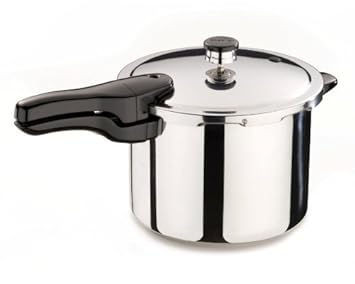Originally Published Nov. 27, 2012
Updated Jan. 9, 2013
I love bread. Good bread. Crisp crust on the outside and chewy inside. But I don't like the additives in most bakery breads ... YUCK! When I first found
Jim Lahey's "No Knead Artisan Bread" recipe I was ecstatic! Now I could make my own, but .... I often forgot to start the dough the day before I wanted to have the bread (I'm an old fart ... memory is an issue) and dumping that super soft dough into the hot pot was always a case of hit or miss (and missing was messy!).
Next I found the "
5 Minutes A Day" Artisan Bread recipe. This one eliminates the memory issue (the dough can stay in the fridge for up to two weeks) but the sliding the dough off a pizza peel onto a hot stone was easier said than done and the hot water into a hot pan in the oven was tricky.
Last week, as I was preparing for Thanksgiving I was getting out my turkey roasting pan and an idea started to form ... what if I combined the No Knead method with the 5 Minute method? YES!! It works!
So here is Deb's "Super Easy Artisan Bread" recipe.
Ingredients:
3 cups warm water
6 1/2 cups flour
2 tsp sea salt
1 1/2 tbsp instant yeast
(this is essentially the "5 Minute" recipe except it was way too salty so I cut the amount of added salt)
Dump all of the ingredients into a mixer bowl and mix on slow speed just until all the ingredients are combined and form a soft dough ...
Transfer the dough to a 5 quart container and cover leaving one corner open (the piece of foil on my container is to remind me. If you close the container completely condensation will form on the lid and drip down onto the dough making it slimy). Set the container somewhere warm to rise for 2 hours (it can go longer ... I've forgotten and left it overnight. The bread was fine, just a little denser).
After 2 hours it should look like this ...
At this point you can pull out a chunk of dough and start a loaf or refrigerate the dough for up to 2 weeks, baking a loaf whenever you choose ... it will take about 1 hour from the time you start until your loaf comes out of the oven ... really!
This is the dough the next day ... I have sprinkled quite a bit of flour on a work surface and plopped a chunk of dough on it ...
I formed the dough into a loaf shape ...
... placed a piece of parchment paper onto a cookie sheet ...
... and set the loaf on the paper (I set the work surface with the flour aside ... I'm going to use it later). I then set the oven to 450 degrees, set a baking stone on the top oven rack, set the lid from my turkey roaster on top of the stone and closed the oven door.
I set a timer for 30 minutes. When the timer went off I sprinkled the rest of the flour onto the risen loaf and made 4 slashes in the dough with a serrated knife (this allows the dough to expand as it is baking).
At this point I opened the oven door and (using pot holders) set the roaster lid aside (I just set it down onto the open oven door). I slid the parchment paper with the loaf from the cookie sheet onto the hot baking stone (no cornmeal, no pizza peels and no trying to transfer sticky bread dough into a hot pot!)
I set the roaster pan lid over the loaf ...
... set the timer for another 30 minutes (and when it went off I lifted the roaster lid off of the stone and set my bread on a rack to cool.
Isn't it beautiful?
For a round loaf I formed the dough into a ball ...
... let it raise for 30 minutes while the over warmed up, then dusted the loaf with flour and slashed the top into a tic-tac-toe pattern...
... transferred the dough onto the hot baking stone and covered with the hot lid (actually I used the bottom of the roaster for this loaf ... when I baked the first round loaf the top came out flat and I realized that the round loaf rises higher and had hit the top of the lid while baking. Not a problem ... the bottom of the roaster works fine).
After 30 minutes I removed the bread from the oven and set it onto a rack to cool ...
Ta Dah!
Update: Jan. 9, 2013
We've had some foul weather lately with power outages and I got to thinking about this bread. I am now baking almost all of our bread myself but if the power goes out the generator will not run the oven on my stove. So I wondered about baking it in the fire place and yesterday I gave it a try.
I let the fire burn down to a good layer of coals and then moved them over to the right of the fireplace. I set the lid of a larger Dutch over on top of the coals (makes it easier to lift the baking oven out of the hearth) and set a small Dutch oven with its' lid in to preheat for 30 minutes while the loaf rose.
Wearing heavy welder's gloves (I had these to use with my kiln when I'm enameling) I lifted the Dutch out of the fireplace, removed the lid and set the raised loaf into the pot. I set the pot back into the fireplace. After 15 minutes I checked it and decided to turn the pot around (I could tell that the right side was cooking faster). After another 15 minutes I removed the Dutch oven from the fireplace and ...
Ta Dah! A perfect loaf of bread :)
And since I already had the fireplace all set up for cooking I decided to start a mess of ribs ...
... but that will be another story ;)
Notes:
1) The recipe makes 3-4 smallish loaves (perfect for the two of us here). If you make larger loaves increase the baking time by 5 - 10 minutes.
2) During our cool winter months here in Western Washington I am able to store the dough container outside on the porch so it doesn't take up room in the fridge.
3) For Thanksgiving Dinner I formed the dough into a dozen small balls (about halfway between a golf ball and a tennis ball), set them in a group in the middle of a piece of parchment, let raise, slashed as for the round loaf above and baked for 20 minutes ... perfect dinner rolls!
Enjoy!




























